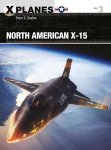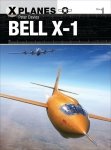-
Załączniki bezpieczeństwa
Załczniki do produktuZałączniki dotyczące bezpieczeństwa produktu zawierają informacje o opakowaniu produktu i mogą dostarczać kluczowych informacji dotyczących bezpieczeństwa konkretnego produktu
-
Informacje o producencie
Informacje o producencieInformacje dotyczące produktu obejmują adres i powiązane dane producenta produktu.Osprey Publishing
-
Osoba odpowiedzialna w UE
Osoba odpowiedzialna w UEPodmiot gospodarczy z siedzibą w UE zapewniający zgodność produktu z wymaganymi przepisami.
The six Douglas D-558 research aircraft, built as two variants, were produced for a US Navy and NACA collaborative project to investigate flight in the high subsonic and supersonic regimes and to develop means of coping with the dangerous phenomena of compressibility and pitch-up which had caused many accidents to early jets. Wind tunnels could not provide the necessary data so pilots had to risk their safety in experimental aircraft which, for their time, achieved phenomenal performance.
Both series of D-558 were well-designed, strong and efficient aircraft which enabled test pilots to tackle the unknown in comparative safety. Though delayed by their innovative but troublesome power-plants, and limited by the cost of their air-launched sorties, they went well beyond their original Mach 1 speed objective and continued to generate information that provided design solutions for a whole generation of supersonic combat aircraft. Although the final stage of the D-55 programme, the USN's 'militarized' D-558-3, never happened, the Navy was able to apply the lessons of the programme to its much more practical combat types such as the F8U Crusader and F3H Demon.
Supported by full-colour artwork including three-view plates of the two D-558 models and a technical view of the D-2 cockpit, this authoritative text offers a comprehensive guide to the record-breaking Navy research craft.








